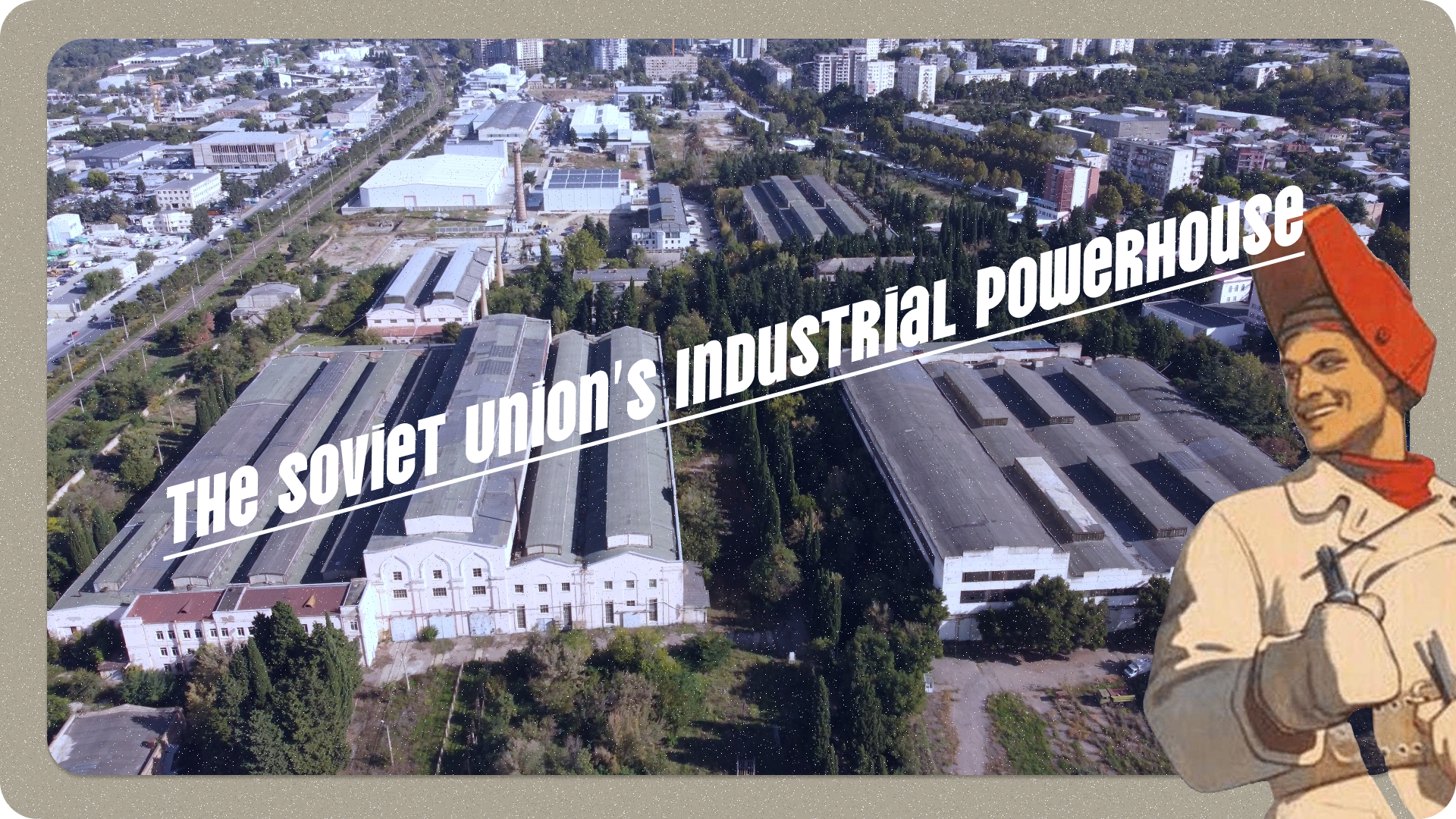
I had a few ideas for this post out of nowhere. There's a lot of urban exploration that I have been doing throughout Tbilisi, all the way down to hunting Tbilisi's secret nuclear bunkers that are hiding in plain sight. I've had some ideas for making posts about these in particular but the question of sharing locations of things people intentionally keep secret seems like a bad idea. But outside of these secret nuclear bunkers are their industrial zones that they reside in. The Soviet Union was terrified of the idea of a nuclear conflict with the United States of America. And that anxiety was much felt in these areas of high population and economic output. Railways, factories, and transportation routes were a high threat alongside your typical military zones. Tbilisi's industrial zones are scattered throughout the city, and are found tucked away in even the most dense and modern areas of the city. Some factories are turned into new hubs for culture and entertainment, whereas others are stripped out from the inside and turned into something not too different from their original intended purposes. Others, such as the ones featured in these images, have been left in time.
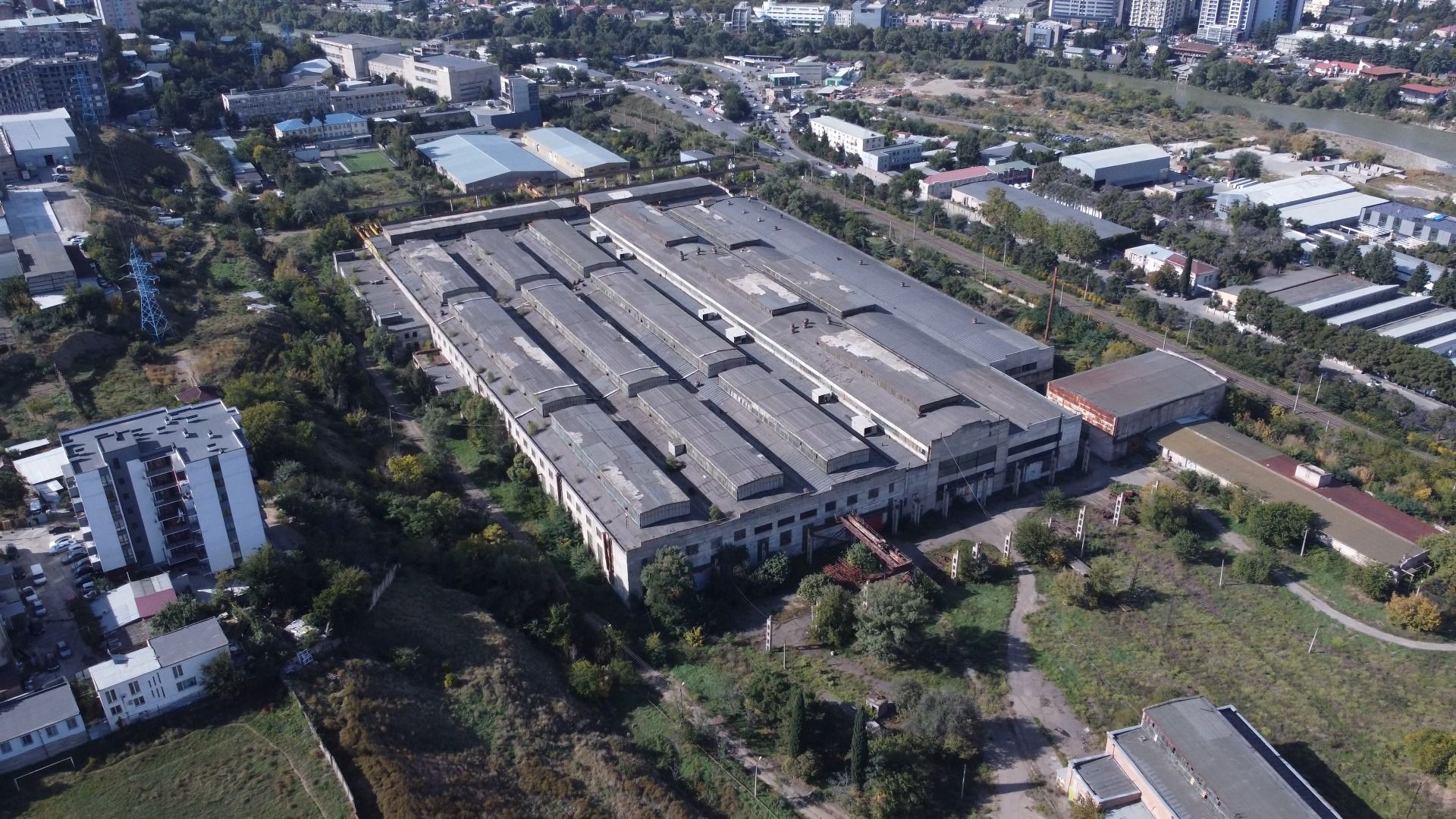
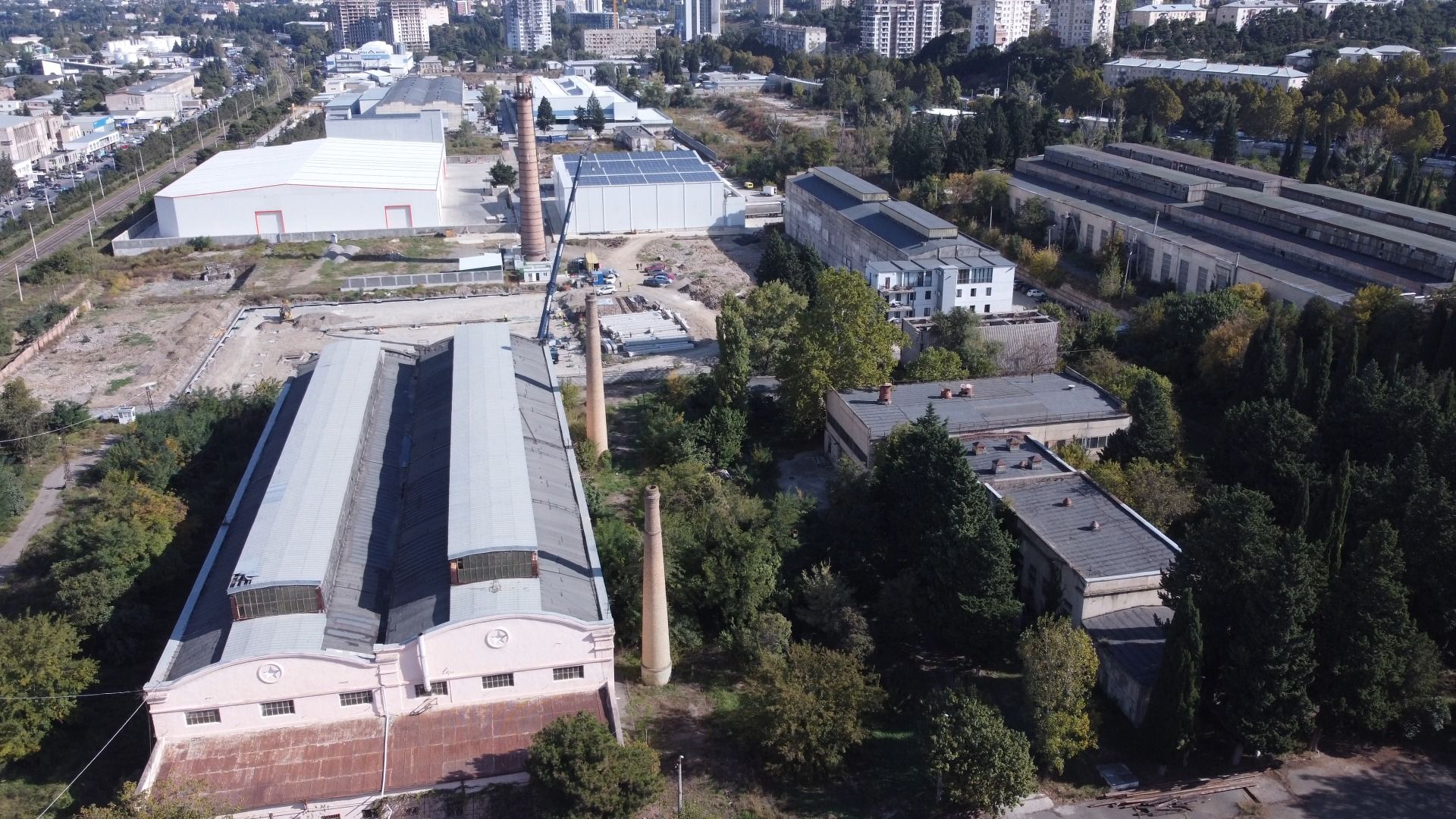
I spend a lot of time on Google Maps here. I'm always searching for something new to find and roam around on foot. These historical locations massively interest me for their architectural beauty and previous impact on the nations. Abandoned industrial zones are fascinating, they hold items of the past. They speak of an era long gone. And there's an atmosphere of greatness to them in this part of the world where their previous communist ideology held great pride in the idea of the worker and their freedom. Scattered throughout these rustic environments are symbols of the former Soviet Union. The red star at the top of buildings. Years of completion written proudly above warehouses. Or, if you're very lucky, you'll see the old hammer and sickle still present, though this is more of a rarity in the more central areas of Tbilisi, where the nation heavily rejected its past and has worked extensively to remove any communist symbols. I came across a specific area in the city that seemed massive. Huge buildings that just appeared out of nowhere in the heavily-developing areas of the city. Green all around as this area had been forgotten in time. It's generally quite rare to find large areas like this in the centre of the city, where decades of neglect had turned many of these zones into debris.
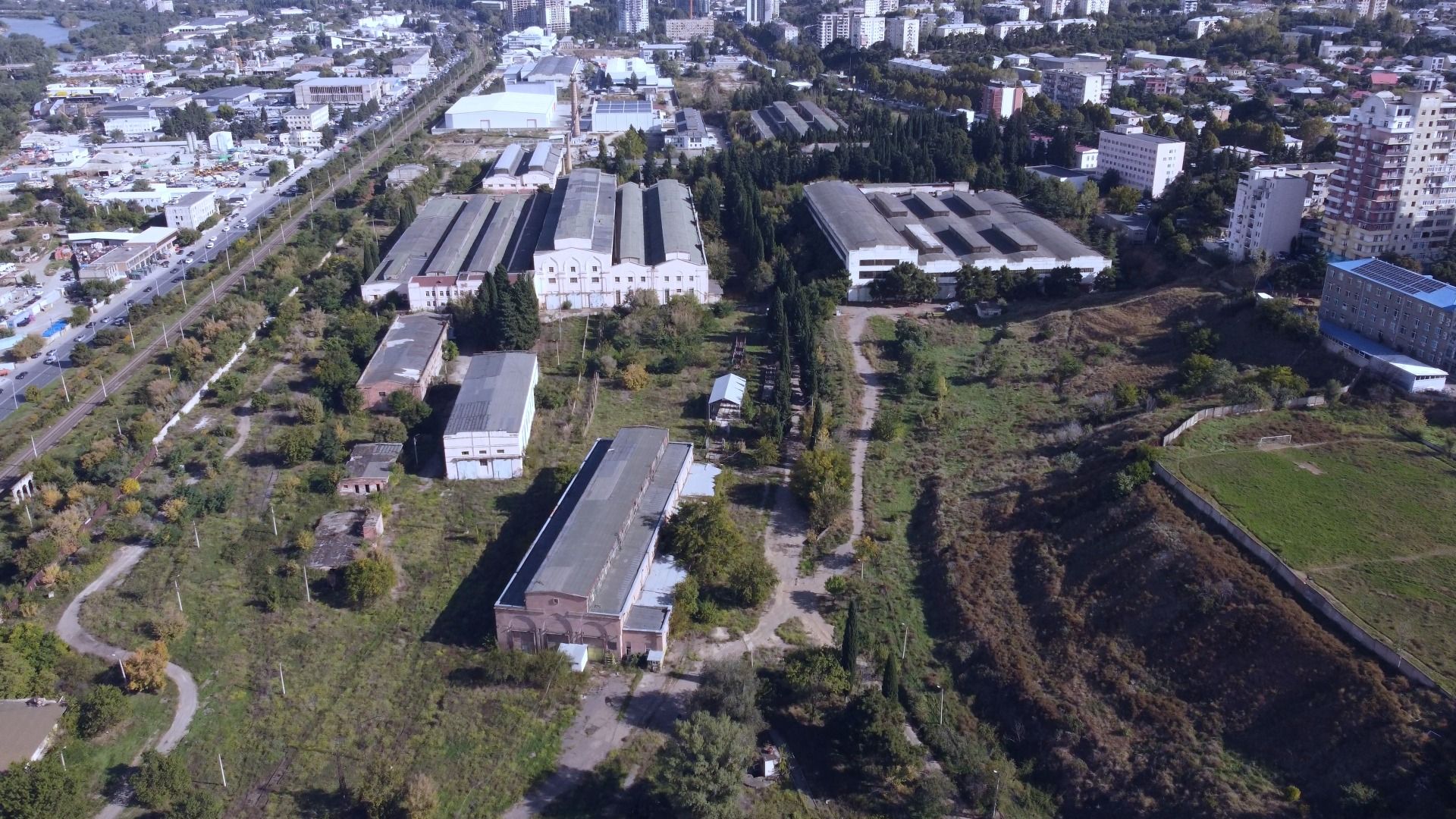

The thing that stood out to me here though was the clear preservation of these buildings. It felt untouched based on the images from the maps. I researched a route over to the location to which it took me out of the cozy area of residential Saburtalo and north of the city, taking the old Soviet metro lines that also heavily showed their age. A little bit of walking in the area and rechecking maps had me walking through old and decaying apartment buildings. Dogs barking wildly from balconies down at me, and the fear of there being stray dogs in this quiet area instantly hit. I was alone. The air was mostly still and the sun was still somewhat strong despite the clear arrival of autumn, and it led to a perfect environment for setting up my drone and throwing it up over the area to scout a bit. The first thing I wanted was to find entry points, and to check if there was a clear attempt to secure this zone before attempting to enter it. Though with that stray dogs concern, I photographed this zone from above only, with intent to return to the location for ground photographs inside another time. I was in awe at how large this area was. How immaculate its condition was. Yet it felt empty, abandoned and clearly forgotten in time. I was surprised at how the buildings weren't riddled in graffiti or with tons of smashed windows and scattered stolen pieces of metal.
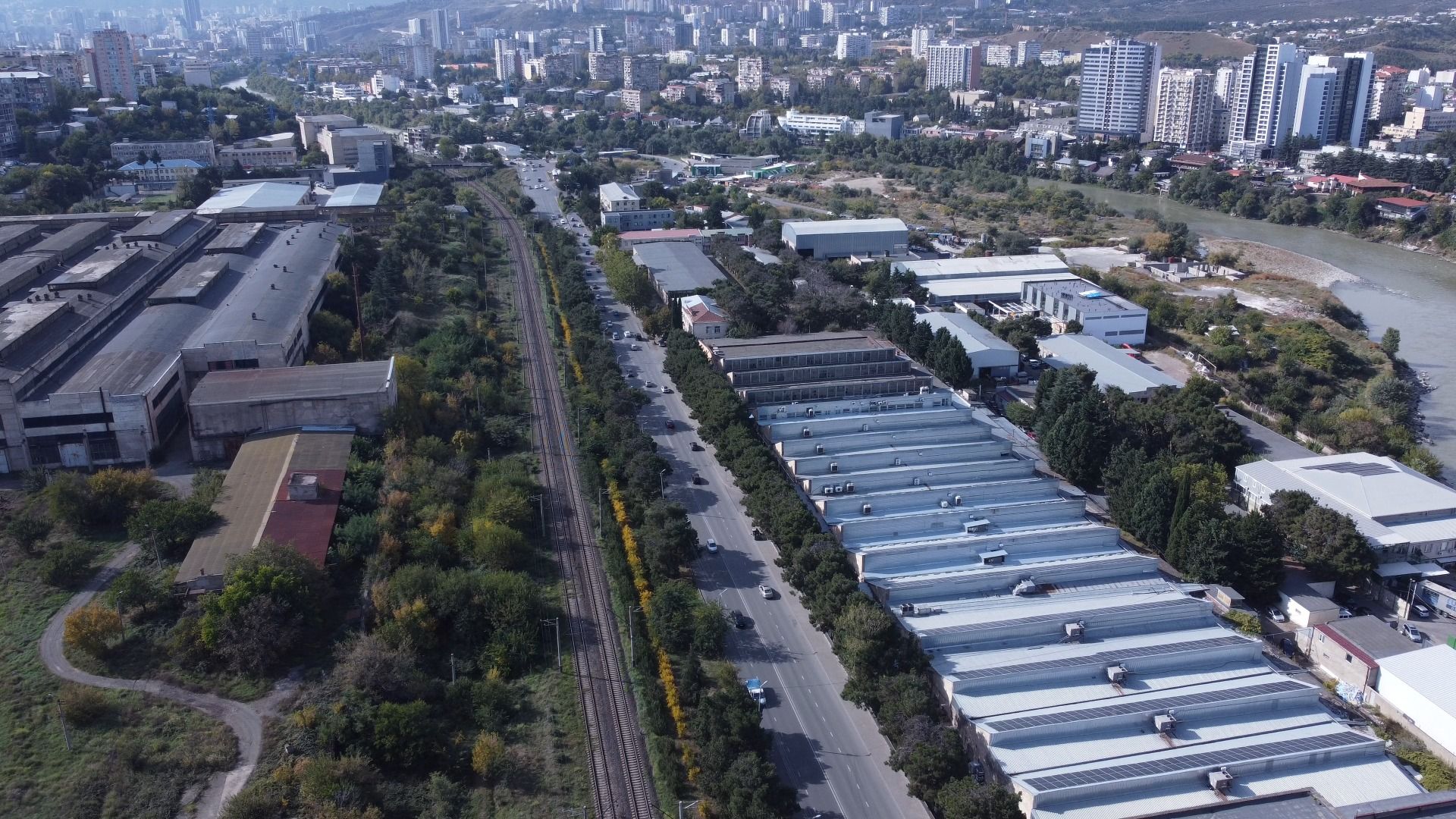
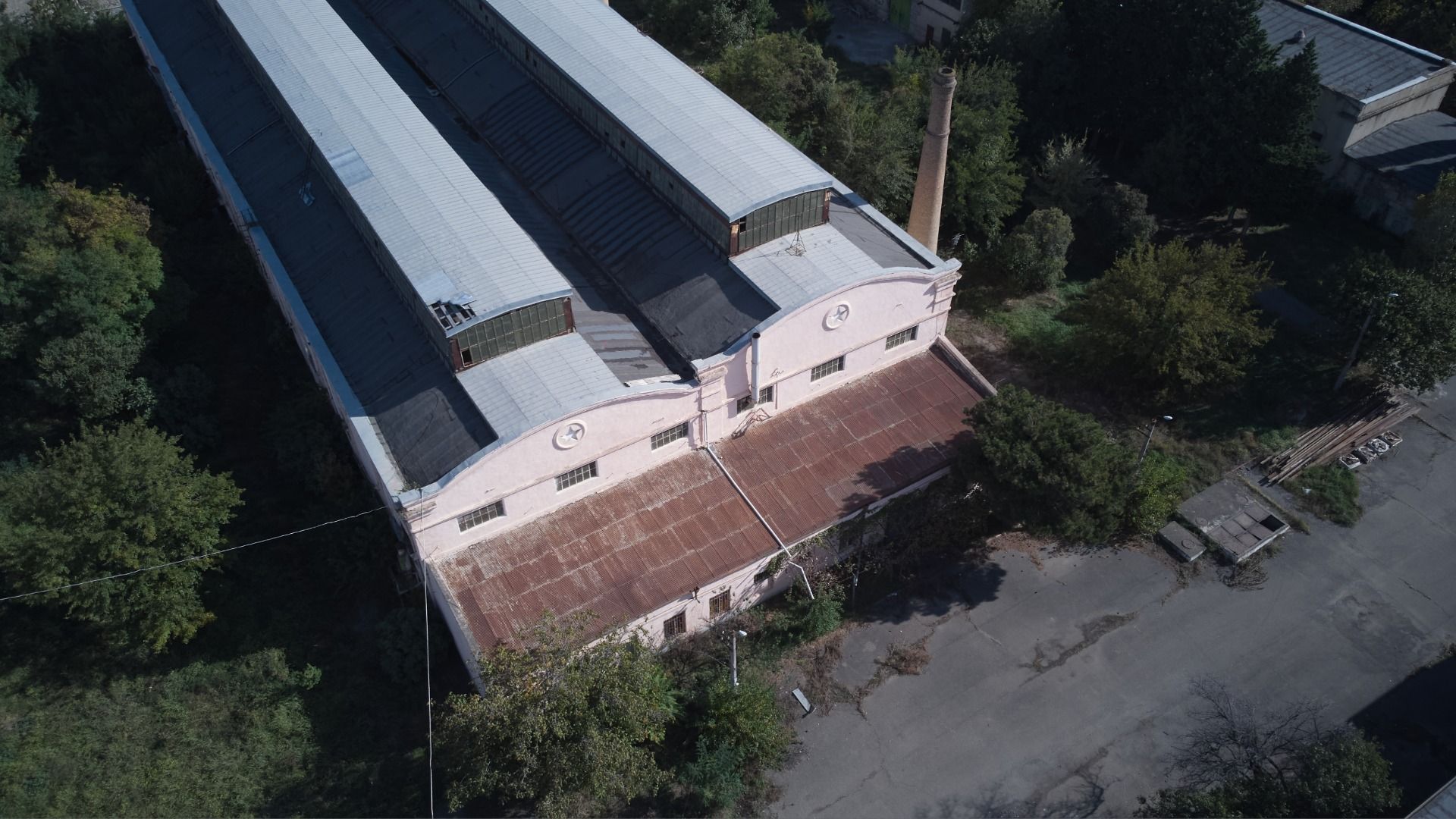
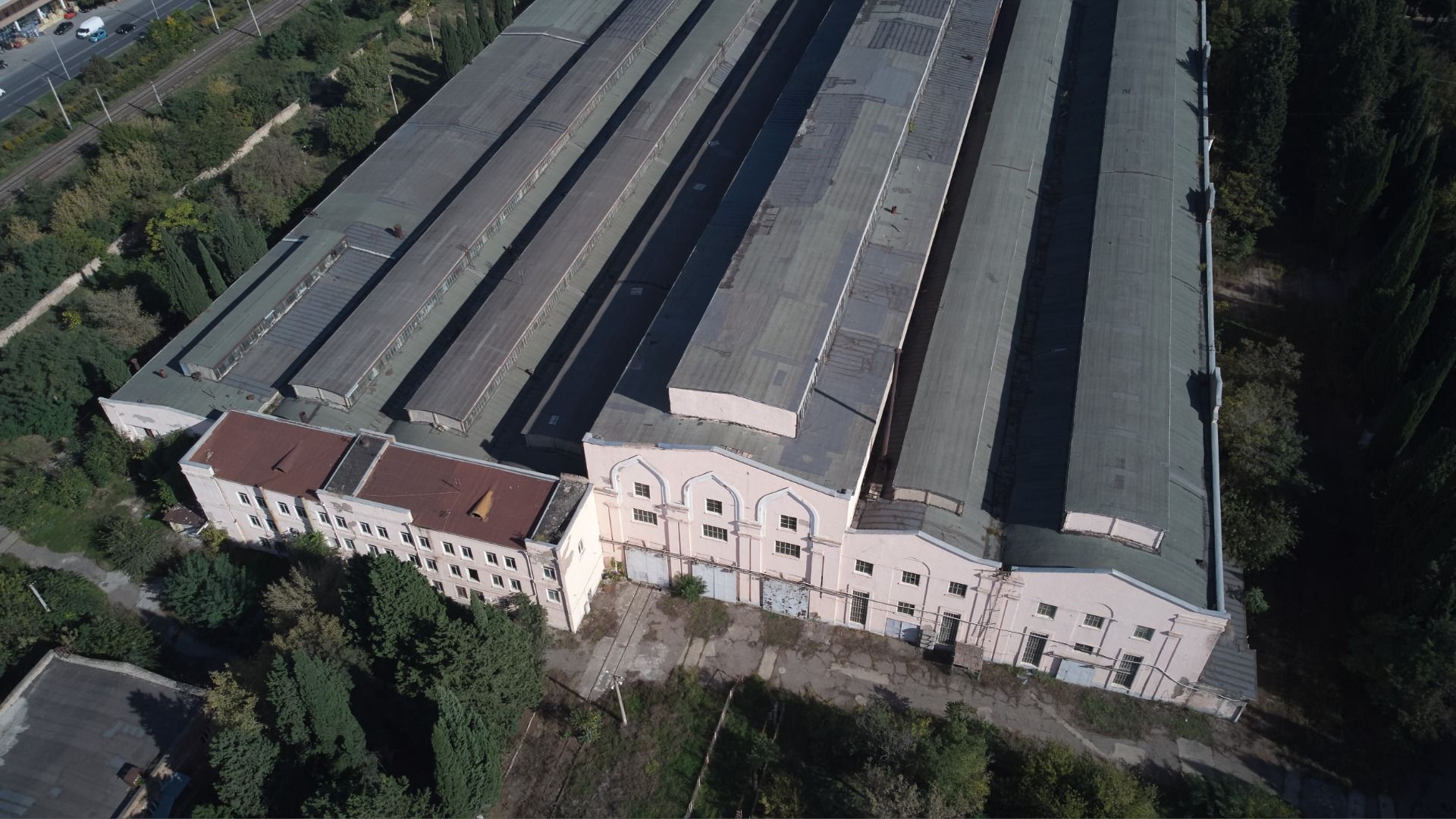
These factories appear out of nowhere with a drone, but are hidden from view with the density of trees around. Primarily hidden by a large wall and the aforementioned rail that connects to the main road. I think these two reasons in particular are what have led to these factories remaining in such incredible condition. Void of damage from vandals and generally graffiti free. I really liked seeing this from the drone, the immaculate condition of these buildings gives such a better view of what this place could've once looked like at its height. And it's somewhat visible with the bits and pieces of machinery and industry that remain. And that feeling of industrial might is felt with the presence of the red star itself in the image above, which reigns above one particular factory building. I didn't notice it or any other symbols similar to the Soviet Union here outside of this one. Which surprised me a little bit. Though I may have missed something. There are often signs of the pride in industry in such areas, whether it's the date of creation or communist symbolism. It really felt like a personal tour through time to fly the drone over the area.
These factories are also definitely containing original machinery and items too. The biggest sign was how the drone would lose its signal while flying lower to the rooftops. Where all that interior machinery would've resulted in the signal getting interference. The largest building in particular impacted the drone quite heavily as I flew low to the roof, shooting directly over it and then experienced total signal loss. I assumed the drone would've crashed into something had it continued to move forward given how low it was. But it stopped, gained more altitude and automatically attempted to return to home. I experimented a little with this by flying higher and around certain areas of the buildings, trying to see which ones would have something interesting to explore and photograph inside upon a second exploration to the area.
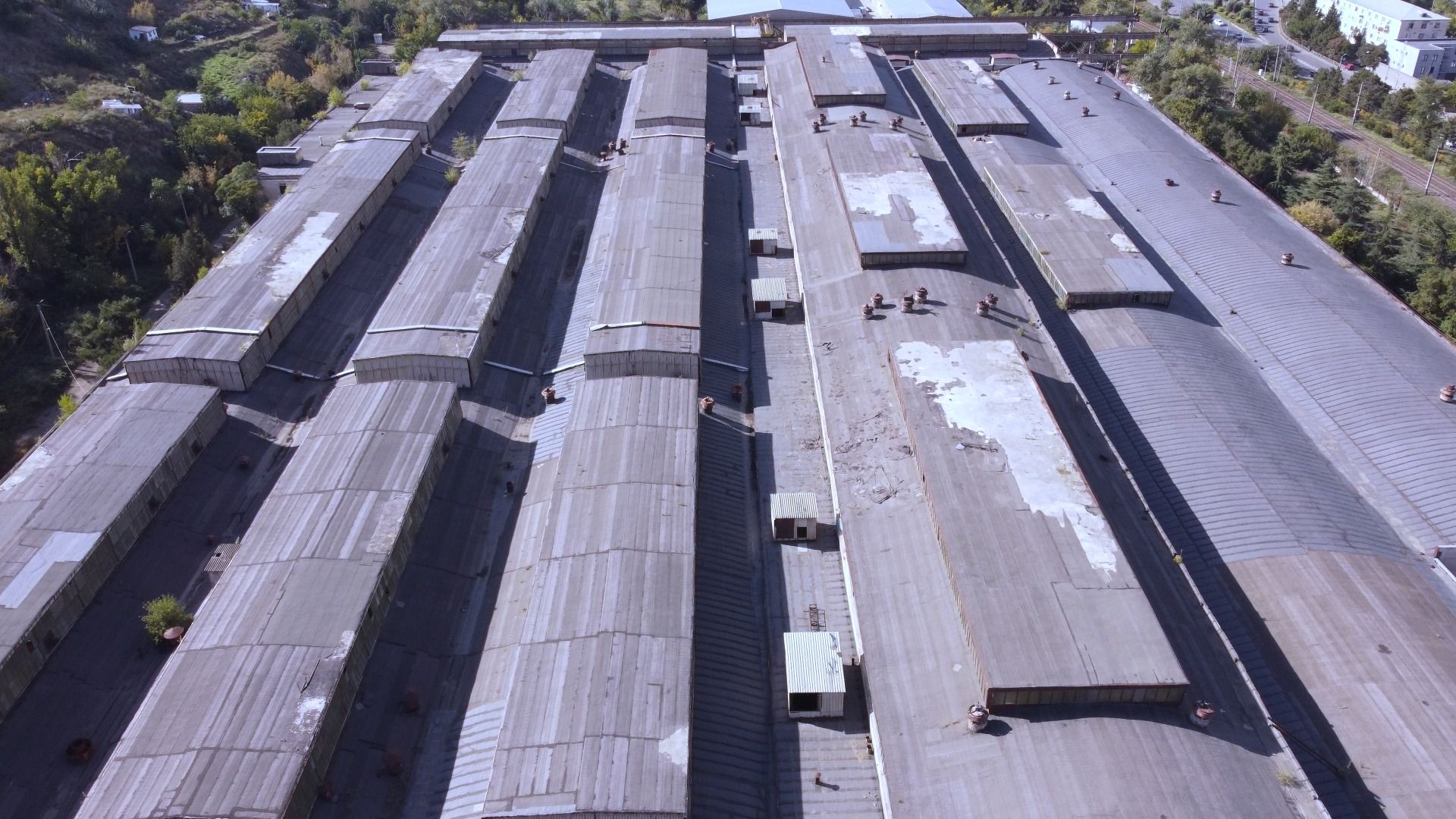
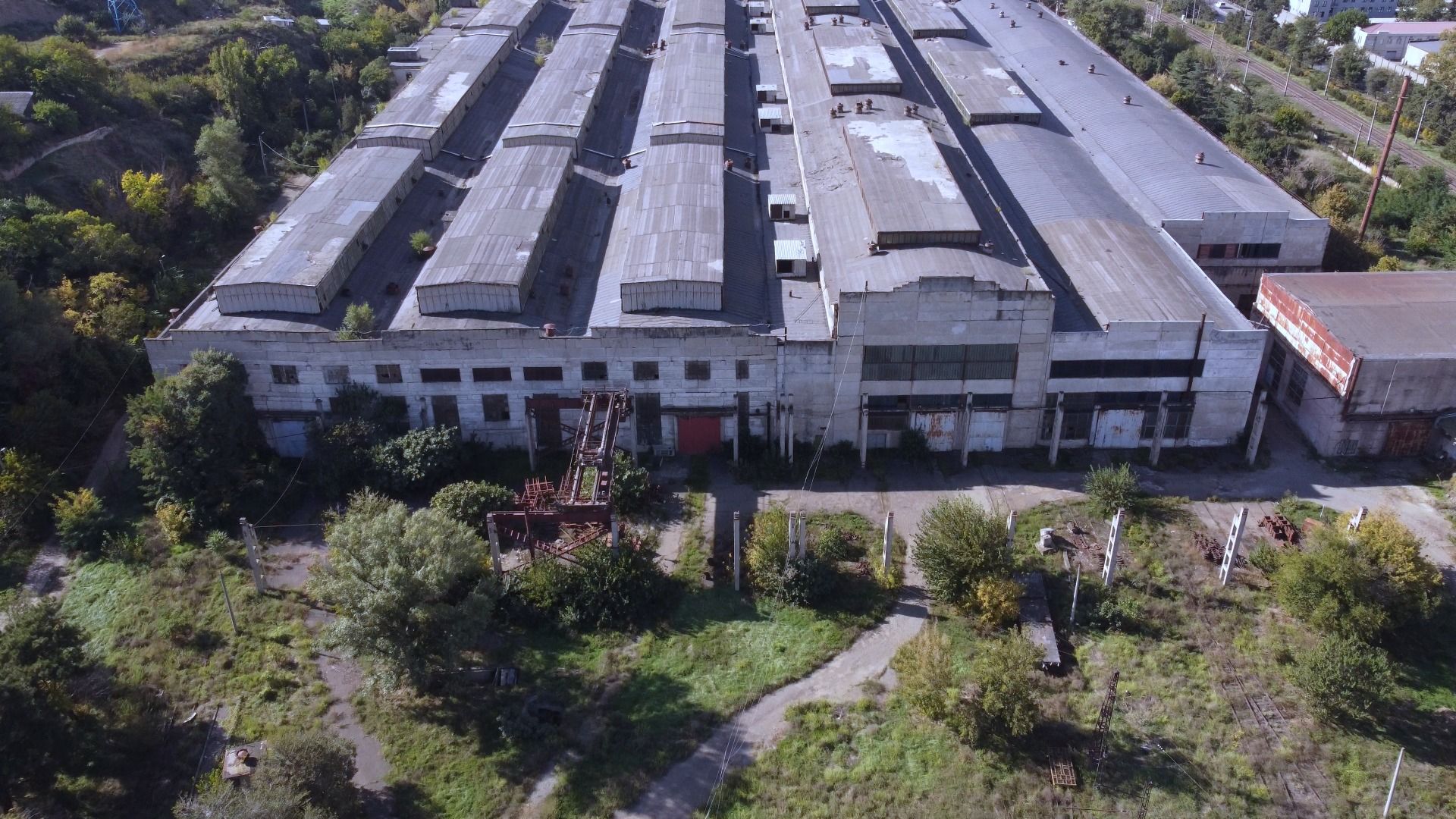
This is a similar view to what I had before the signal loss. Here things were fine. But the more interesting thing you can notice is how good the condition of the rooftops are. These larger buildings had rail that would go inside, with large doors that would open and close to accommodate the arrivals and departure of the factory's produce. I suspect that some of the Soviet symbolism was likely removed around the collapse of the Soviet Union and that some of these factories may have continued production for a few more years. That is often the case in certain areas where the factories have such a massive scale such as this one. The smaller ones in more remote areas being the ones to have suffered almost immediately given the difficulty of transportation and the little importance their production would've had domestically. These factories are in the heart of Tbilisi. Residential space is found all around, with the river not far from it. Though I don't want to be saying where exactly these factories are located as to ensure their general protection and condition going forward. Assuming the government doesn't have modern plans of total destruction of them; something I suspect would've happened already had these buildings not been so large and located in such a difficult space with the rail so close.
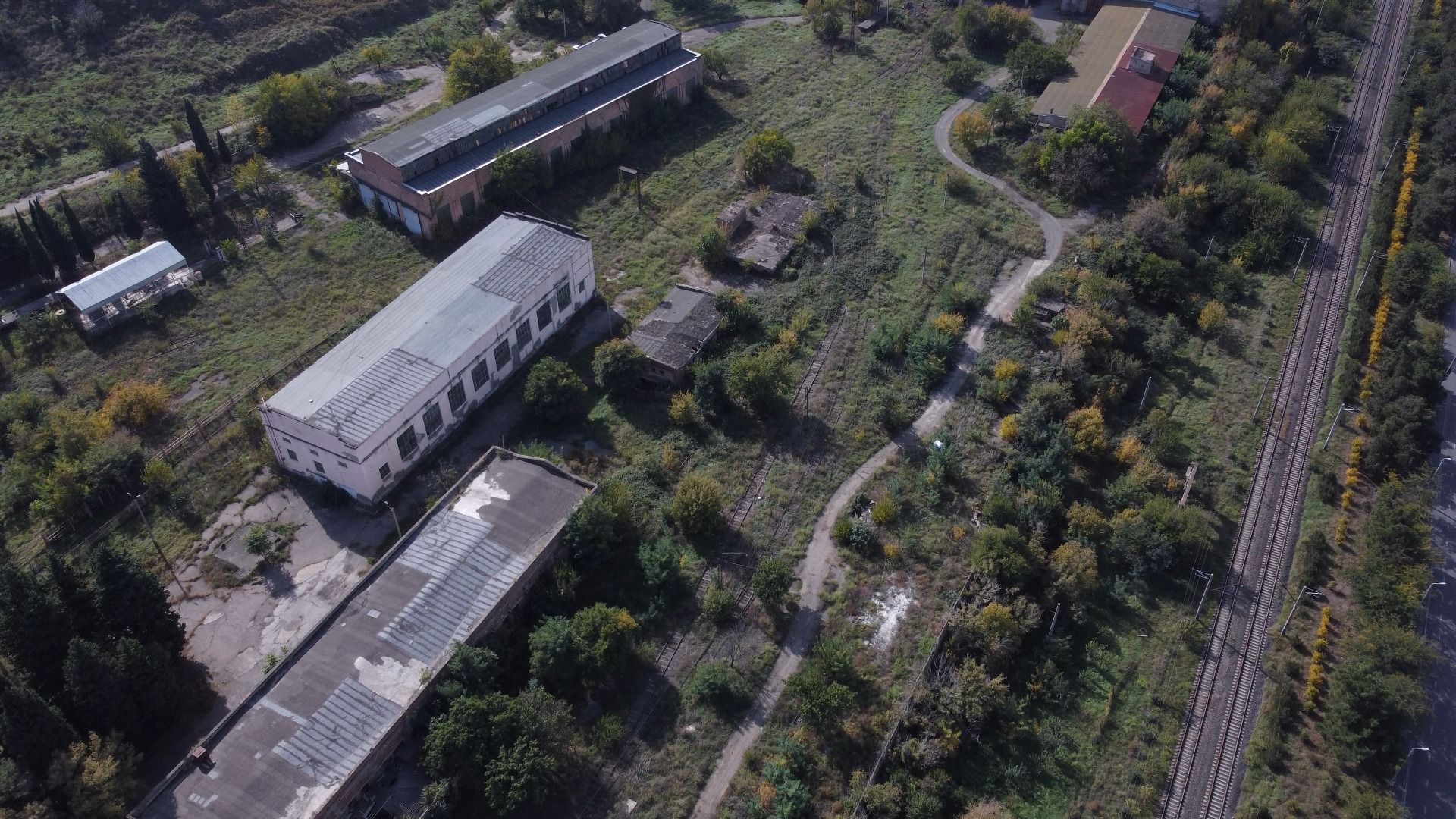
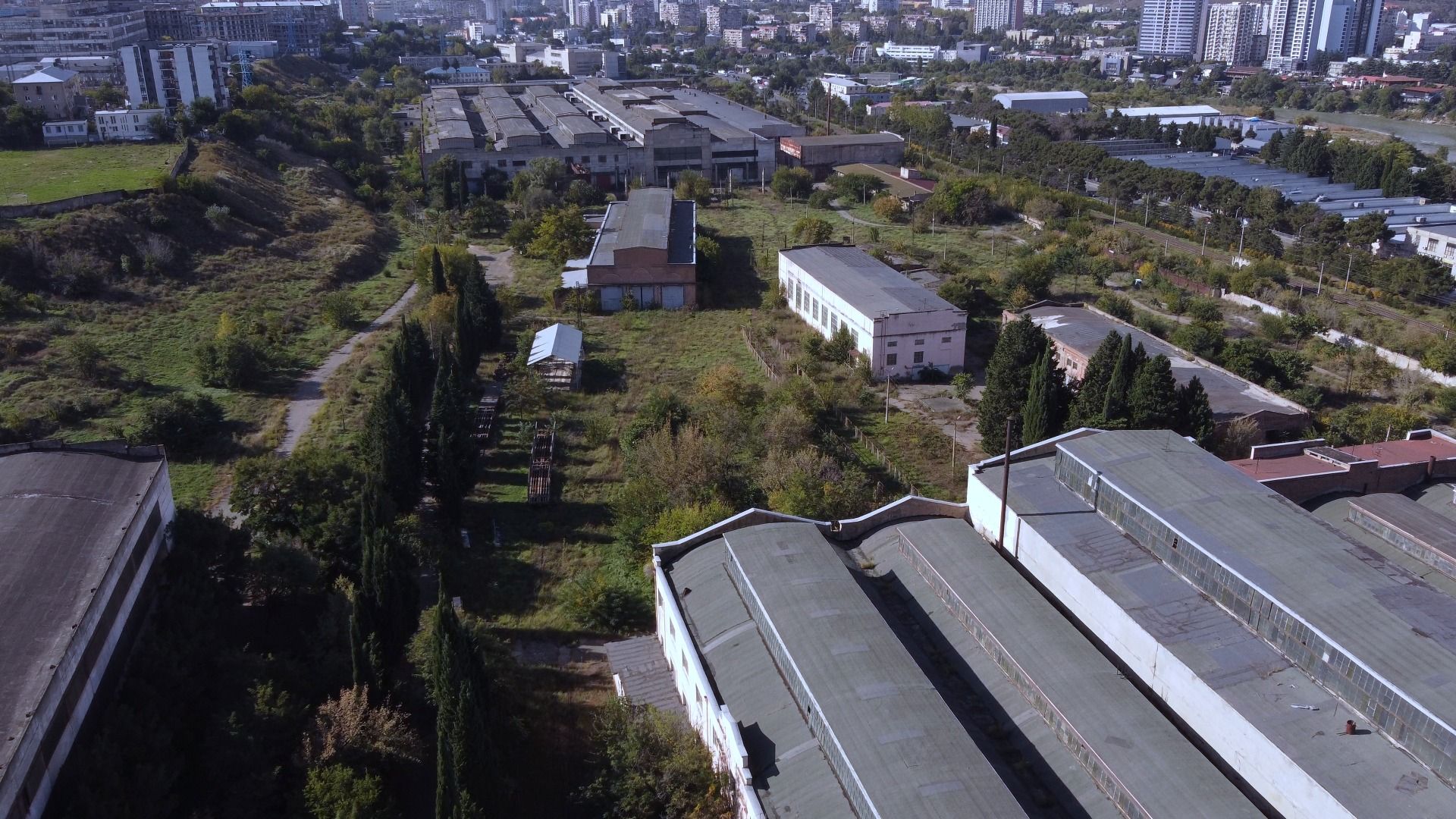
Here you can see the various buildings in the area that would've handled different production tasks. From offices that handle the paperwork side of things and overhead, to the worker's rooms where they would've kept their belongings and checked in and out each day. As well as had their moments of rest and food during the day. Others were clearly meant for the holding of goods for storage. Some buildings had larger towers by their sides which were used for the burning of material for the production side of things. I thought about it a little and based on their sizes and shape, they didn't have a purpose of cooling things, but rather were smoke towers. You can see these in the above images featured in the post. In some areas there were clear passages to underground areas. This was something I expected given the importance of the Soviet Union's industrial matters in the event of nuclear war with NATO. I'm not posting images of these suspected areas, but factories were often a point of interest for nuclear bunkers, where they'd often be found either inside the buildings or nearby. Perhaps something to feature in the future post where I approach this space on foot.
That said, this space displays the sheer scale and seriousness of the Soviet Union's ability to produce and sustain itself. Likely created around the 1950s as the industrial boom came about shortly after the Second World War and the Soviets recovered tremendously with a much stronger ideology that pursued modernism alongside the industrial powerhouse intent. If the Soviets were to survive against the race with the west, they had no choice but to create and produce. These buildings a sign of that Cold War era of anxiety. And that anxiety is something that fuelled significant changes around the world; something we shouldn't be demolishing and forgetting.
